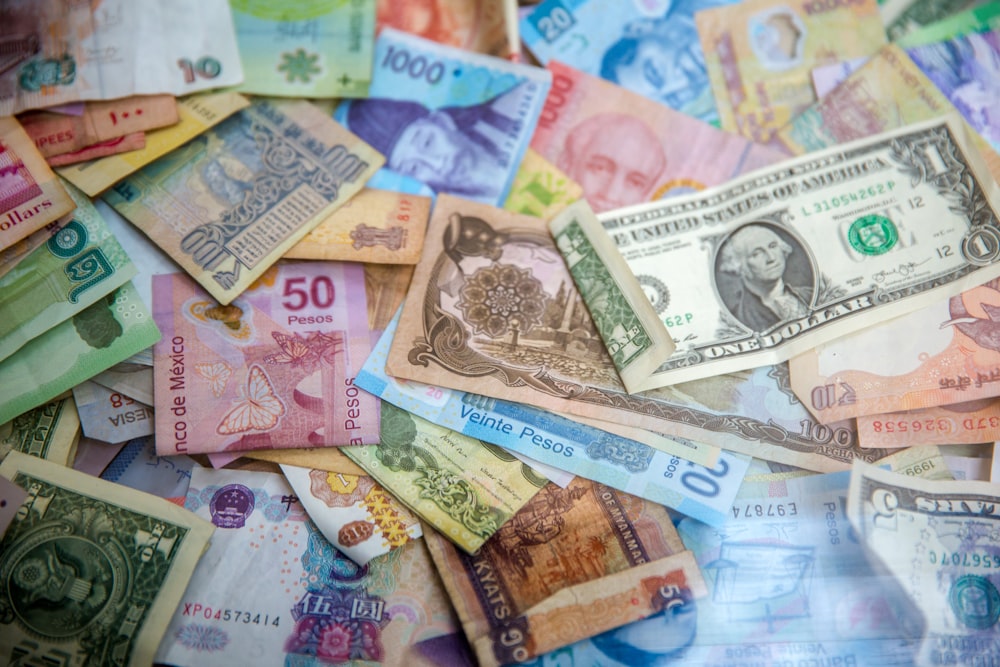FX Daily: Falling Gas Prices Fuel Optimism
Photo by Jason Leung on Unsplash
The European Union decides what's next in the gas story. The European Central Bank is entering a blackout period ahead of its 27 October meeting. FX interventions are back on the table in Japan. Political uncertainty in the UK has found a new shape. The Czech Republic's credit rating is in jeopardy.
USD: Strong dollar drivers intact
The resignation of UK prime minister Liz Truss reverberated across FX in a largely risk-positive way yesterday, with high-beta currencies (like AUD and NZD) ultimately rising more than the directly impacted GBP or the neighboring EUR. It’s still quite likely that the upcoming period of fresh political uncertainty in the UK will continue to drive a portion of global risk sentiment.
Yesterday’s small correction in the dollar proved very short-lived. This is not surprising, as most drivers of dollar strength have indeed remained intact. Markets have pushed their peak Fed rate expectations to the 5.0% mark, and UST 2-year yields are inching closer to 4.60%. This rate environment continues to shed doubts about the sustainability of any rally in equities, and chances that the dollar will receive more safe-haven flows are elevated.
The rate environment is also what's driven USD/JPY above 150.00. Japanese authorities are indeed in an uneasy position. We can easily see their interest in not drawing a line in the sand at 150.00 given the very elevated market volatility, but allowing the yen to break higher risks generating those sharp sell-offs in the currency that Tokyo wanted to curb in the first place. Unless the Bank of Japan shifts to a less dovish stance (no hints of this happening so far), FX interventions remain the most viable option.
The US calendar is very light data-wise today and two Fed members – John Williams and Charles Evans – are due to speak. For the moment, we see no reasons to change our call for a return of DXY to the late-September 114/115 highs over the coming weeks.
EUR: Still no benefits from falling gas prices
The ECB has entered its quiet period ahead of the 27 October policy meeting which – as discussed in our ECB preview – should bring another 75bp hike but likely very little support to the euro. On the data side, markets will monitor consumer confidence data for September today, with consensus centred around another drop (to -30.0) from what are already all-time lows in the series.
Falling consumer confidence is hardly surprising, but the fact that the euro is drawing very little benefits from the recent drop in gas prices is likely a testament to how markets are clearly looking well beyond short-term dynamics and may actually be growing increasingly concerned about Europe’s energy supply for next year, not just this winter.
It looks like 0.9800 is working as an anchor from EUR/USD at the moment, and this could continue to be the case today unless we receive some truly exciting news from the ongoing EU summit, which has so far only displayed lingering divergence in EU members’ views on energy price caps. We retain, however, a bearish bias on EUR/USD and expect a drop below 0.9500 by year-end.
GBP: Never a dull moment
The simmering uncertainty over which candidate will now replace the British Prime Minister, Liz Truss has probably prevented sterling from moving too far out of this week’s trading range. As Antoine Bouvet highlighted in our joint note yesterday, the Bank of England may choose the lesser of two evils by deciding to hike less than the market expects – certainly sterling seemed to soften on remarks to that effect from the BoE’s Broadbent yesterday.
As we concluded in that article, our view is that: a) UK politicians will struggle to quickly reclaim all of the lost fiscal credibility and b) US real interest rates look set to push even higher this year meaning that GBP/USD will likely struggle to break above the 1.15 area over coming weeks. Equally 0.8600 may well prove the lower end of the EUR/GBP trading range over coming weeks and maybe months too.
CEE: Czech Republic rating is at risk
Today in the calendar we get the second round of monthly data on retail sales and construction in Poland. In our view, in September sales expanded by 4.8% year-on-year, which is a similar pace as in August. The structure of sales is projected to remain similar, with poor sales of durable goods and solid sales of necessities (food, clothing). In the Czech Republic, the Fitch rating review will be published later today, which we believe will be the most crucial one this year. Fitch has proven to be the most aggressive rating agency in the current energy crisis and we see a high risk of a one-notch downgrade for the Czech Republic. The outlook was downgraded from stable to negative back in May and since then most macro, fiscal, and energy assumptions have deteriorated.
The FX market continues this week's story – low gas prices, rising interest rate differentials across the region, and friendly EUR/USD levels. We should hear more today from the European Commission on what the next steps or measures will be on the energy crisis front, which should be positively received, and CEE FX should continue the current trend. The Polish zloty and Hungarian forint hit our targets yesterday and we see room to go lower today, closer to 4.750 EUR/PLN and 405 EUR/HUF. If Fitch downgrades its Czech Republic rating, the impact on the koruna can be expected on Monday. Until then, we may see a move below 24.50 EUR/CZK.
More By This Author:
Rates Spark: Relentless And Potentially Dangerous
Turkey’s Central Bank Surprises With 150bp Rate Cut
Poland: Fears Of A Wage-Price Spiral As Wages Continue To Climb
Disclaimer: This publication has been prepared by the Economic and Financial Analysis Division of ING Bank N.V. (“ING”) solely for information purposes without regard to any ...
more



